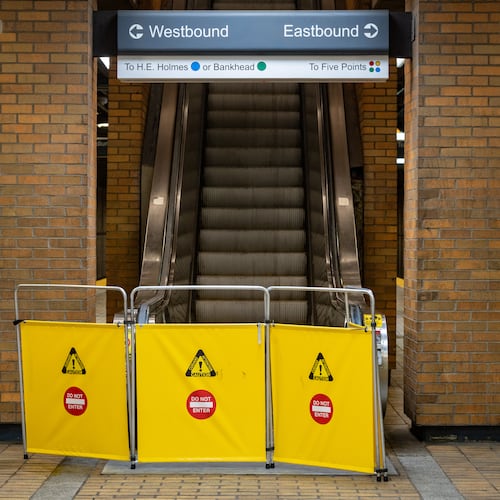Decatur trees will have even more protection by spring.
For roughly three hours, Decatur commissioners heard comment after comment from neighbors who supported adopting the tree protection policy, which can fine residents and developers who refuse to replace trees they cut down. Those fines could be upwards of thousands of dollars.
About 30 people spoke during Tuesday’s meeting, and their remarks varied from number-crunching arguments for preserving trees to impassioned pleas to value greenery.
“Even those of us who mean well tonight are talking percentages and numbers and not putting on record that these trees are more than numbers — they too have souls,” Aviva Vuvuzela said during the meeting.
Decatur, which already had one of metro Atlanta’s more rigorous tree canopy laws, has worked with residents for roughly two years to update and revise the policy. It recently became a bumpy process, with some last-minute changes being introduced last month, derailing a council meeting into another lengthy debate.
The commission ended up sending the revised policy to the Decatur Planning Commission, since the updated ordinance effectively acts as zoning policy. Last week, the planning commission voted 4-2 to recommend the revision’s denial due to the inclusion of a potentially hefty fee for residents who remove protected trees.
This led to a groundswell of residents rushing to defend the policy Tuesday.
“If the City of Decatur is serious about achieving its goal of preserving the tree canopy, as it claims to be, then this ordinance clearly is absolutely necessary, Alan Ambramowitz, a resident, argued during public comment.
The new ordinance removes a controversial clause that allowed residents to cut down three trees every 18 months — no questions asked. In many situations, if a tree is cut down, two trees will have to be planted to replace it. In addition, the revised ordinance prohibits developers from scraping entire lots for projects.
The policy will also prompt the city to hire another city arborist to keep up enforcement and facilitate Decatur’s goal of reaching a 65% tree canopy coverage over the entire city. It’s currently at 57%.
While most residents who participated in Tuesday’s meeting were vehemently supportive of the policy, a few residents voiced their dissent. Leslie Petosa, a builder in the area, said she felt the ordinance was extreme and would stifle development.
“If everybody wanted to live in a forest, they’d live in Blue Ridge,” Petosa said, referring to the small city in the North Georgia mountains.
The most divisive policy proposal was the creation of a canopy tree loss fee, which carries a hefty fine for removing protected trees. It’s the first fee of its type implemented in the Atlanta area.
The policy raised concerns over whether it would overly incumber residents while allowing developers to pass on the extra cost.
“It’s going to make it where a regular middle-class homeowner will not be able to do a substantial renovation of their house to sell it for profit, but a wealthy developer can come in and do whatever they want,” Commissioner Lesa Mayer said during a December meeting. “That’s problematic. That’s inequitable.”
To calculate the fee, the city will use the National Tree Benefit Calculator to see the effects of losing that tree over the next five years. Using the calculator, the cost of removing a 24-inch white oak would incur a fee of about $1,250.
“I know it costs a lot of money to take down a tree, but you’ve got to think beyond that,” City Arborist Kay Evanovich said Tuesday. “What are the benefits that are being lost that we all benefit from? So that’s where the canopy loss fee idea was created.”
The commission unanimously adopted the tree ordinance revisions, which will go into effect March 21.
About the Author
The Latest
Featured



